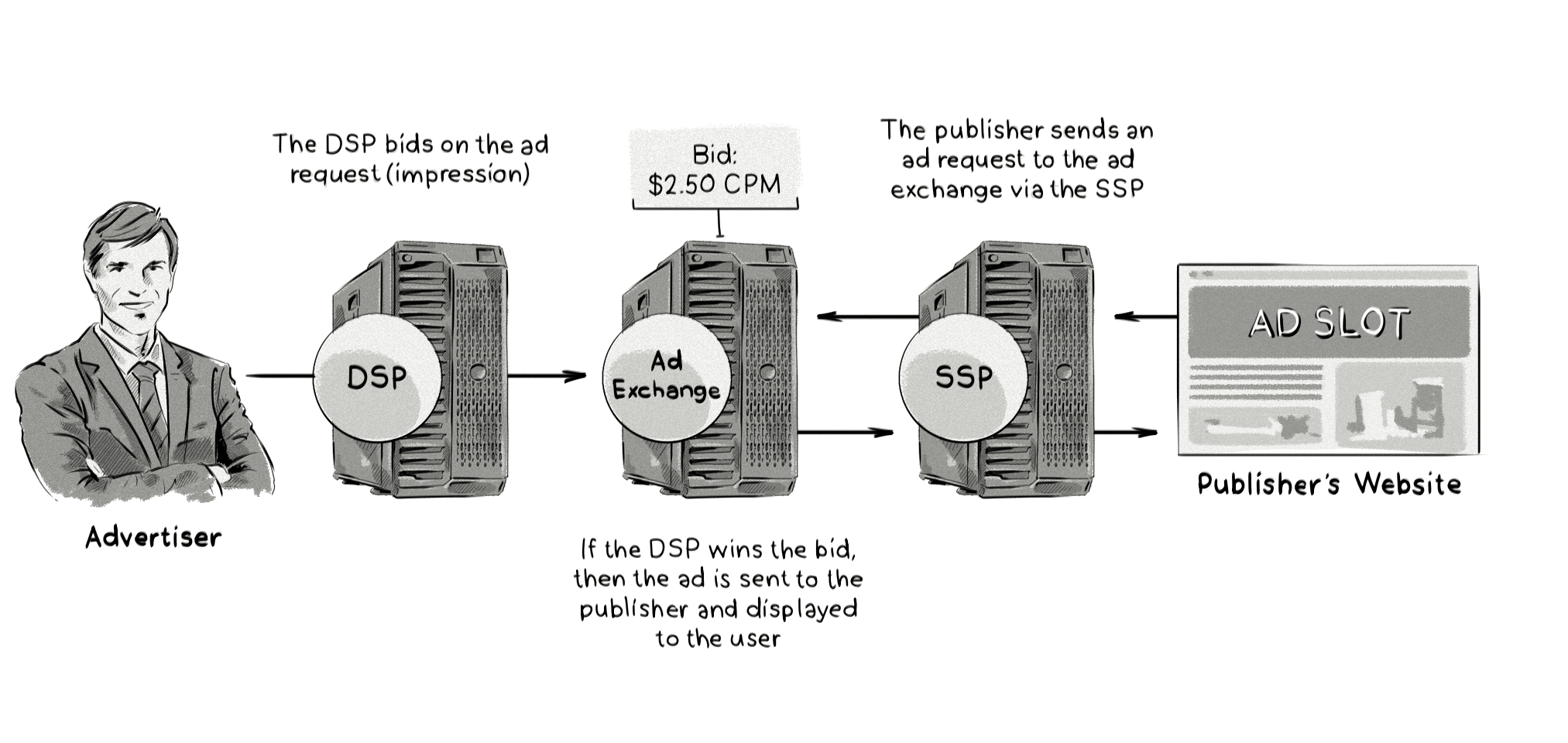High quality journalism is expensive to produce. The American Prospect, a political news magazine, estimates that it costs $1965.58 to produce an average story.
When an organization such as The New York Times or Wall Street Journal publishes an article, it is the result of many hours of labor by journalists, fact checkers, editors, photographers, software engineers, and many other contributors. Even for individual bloggers, many hours of labor are required to create posts on travel itineraries or cooking recipe ideas.
Many creators recoup the costs of media production primarily through digital advertising. Showing digital ads on websites allows the content producers to monetize their work without charging subscriptions or receiving grants.
However, even the placement of digital ads itself has marginal costs associated with it. Digital advertising has a virtual “supply chain” of Supply Side Platforms (SSPs) that work with publishers, and Demand Side Platforms (DSPs), which aggregate ad buying demand from media agencies and brands.
How much do these ad tech intermediaries charge for the service of connecting advertisers with digital publishers?
This preliminary Adalytics study on programmatic media supply chain fees reproduces and builds upon several previous industry studies. This study discusses the following empirical observations:
- There is a high level of variability in the supply fees charged by SSPs and DSPs, on a per impression basis. In some cases, even when controlling for media buyer (advertiser), supply path, and publisher domain, the revenue share of these middlemen can vary by up to 80% (e.g, 5% fee on one ad impression, 85% fee on another ad impression);
- For some impressions, DSPs and SSPs receive up to 98% of a media buyer’s bid; with the publisher receiving only ~2% of of the advertiser’s spend bid;
- SSPs with non-standard native or proprietary ad unit formats can have especially high supply fees;
- SSP fees vary by publisher and do not appear to correlate with the quality of the publication or audience. For example, it was observed that publishers with niche but high value audiences (such as pharmaceutical executives or Congressional staffers) were being charged higher SSP fees than a clickbait, ‘made-for-advertising’ site that auto-refreshes ad slots and employs other questionable tactics
- Some SSPs appear to subsidize individual ad impressions; this may be done to improve their aggregate win rates so that they appear more effective (to either the publisher or the advertiser)
Background
In a present-day, 1st price ad auction, there is a sequence of events that take place. When a reader visits a website, the website will communicate with several Supply-side platforms (SSPs) that aggregate ad inventory from many different publishers, ranging from tiny blogs to 100+ year old national papers-of-record.These SSPs will present information about the ad auction to a number of Demand-side platform (DSPs), which are used by media agencies or brands to bid and purchase ads across large swathes of inventory.

Image source: Clearcode.cc
Media buyers who work on behalf of…

 English
English French
French German
German



